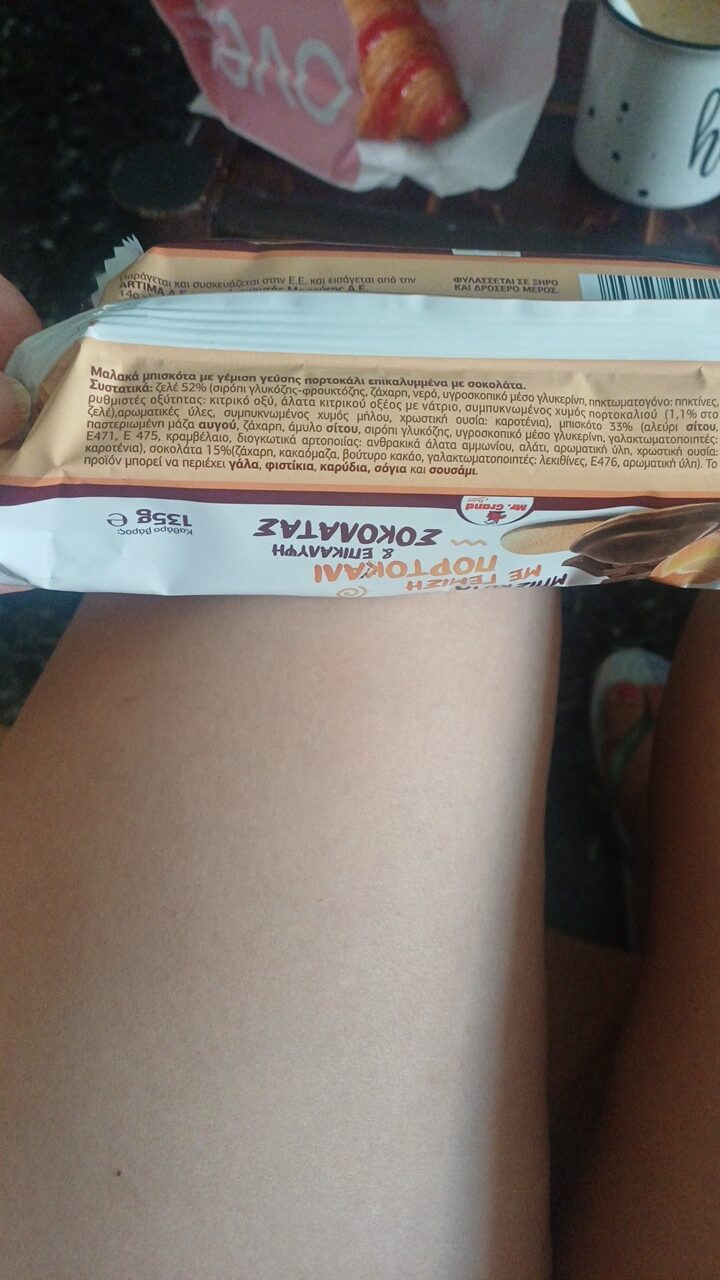
Barcode: 2263978045925
with orange & chocolate
DOUBTFUL
📝 Reason: The Halal status remains indeterminate for some components. Final determination requires knowledge of exact formulations and manufacturing processes.
🏷️ Category: Chocolate, Biscuit
📄 Certificates: Made And Packaged In The Eu And Imported From, Keep In A Dry And Cool Place., May Contain Milk, Peanuts, Nuts, Soy And Sesame.
Ingredients:
Details
Understanding the Halal Status of ‘with Orange & Chocolate’
‘With orange & chocolate’ is a delightful confection that appeals to chocolate lovers craving a unique flavor combination. However, as consumers seek products that align with their dietary laws, determining the Halal status of this product is crucial. The Halal status of ‘with orange & chocolate’ is currently deemed ‘DOUBTFUL,’ leading to questions about its ingredients and the production processes that may affect its compliance with Islamic dietary guidelines.
Ingredient Breakdown
To understand the Halal status fully, we dissect the ingredients list of ‘with orange & chocolate’:
- Jelly – Generally acceptable but depends on the source of gelatin used.
- Glucose-fructose syrup – Permissible in Islam, as it is typically derived from corn or other plants.
- Sugar – Also permissible as it is not derived from any prohibited sources.
- Water – Always permissible.
- Humectant: Glycerin – Halal unless sourced from an animal origin.
- Gelling agent: Pectin – Plant-based and thus permissible.
- Acidity regulators (Citric acid & Sodium citrate) – These are generally derived from plant sources and deemed Halal.
- Concentrated orange juice (1.1% in jelly) – Fully halal.
- Flavorings – Often proprietary, hence difficult to ascertain Halal status.
- Concentrated apple juice – Halal.
- Color: Carotenes – Halal, as derived from plants.
- Pasteurized egg mass – Halal if sourced from chickens.
- Wheat starch and Wheat syrup – Considered permissible.
- Milk powder – Should be Halal certified; check source.
- Emulsifiers (E471, E475, E476) – E471 can be Halal or haram depending on its source, while E475 is derived from glycerol and must be verified. E476 is generally acceptable but needs clarification on origin.
- Rapeseed oil – Typically halal.
- Raising agents (Ammonium carbonates) – Halal.
- Aroma, Butter cocoa, Cocoa mass – Generally halal, but specific sourcing matters.
- Salt, Sesame, and Soybean – All deemed halal.
Understanding E-Numbers and Their Halal Status
E-number labeling can often be confusing. Here’s a brief overview:
- E471: Mono- and diglycerides can be derived from vegetable or animal fat, making it uncertain without further specification.
- E475: This emulsifier may come from both plant and animal sources. Verify for Halal certification.
- E476: Known for its role as an emulsifier, but check for Halal status as well.
Conclusion: The Path to Halal Confirmation
While many of the ingredients in ‘with orange & chocolate’ are permissible in Islam, the Halal status remains indeterminate due to several components, particularly the emulsifiers and glycerin. Final determination requires comprehensive knowledge of the exact formulations and manufacturing processes involved. For strict adherents to Halal dietary laws, it is always best to seek products with a recognized Halal certification.
This product is categorized under Chocolate and Biscuits, and is made and packaged in the EU, suggesting a regulated production environment. However, it is important to note that it may contain traces of milk, peanuts, nuts, soy, and sesame, which could pose cross-contamination risks.
In purchase decisions, transparency is key, and asking brands for ingredient sourcing or certifications can aid in making informed choices. Always check the labels, and when in doubt, seek alternatives that guarantee Halal compliance.
